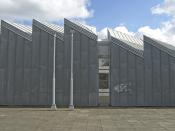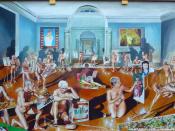Book Review: The Condition of Postmodernity, David Harvey is well-known in social theory circles for books like Social Justice and the City (1973), The Limits to Capital (1982), The Urbanization of Capital (1985), and Consciousness and The Urban Experience (1985) -- all seminal attempts to chart the relatively new and unexplored interface between political economy and urban geography. The Condition of Postmodernity is a significant new work by Harvey that situates postmodern theory within a broad social context. Harvey's main argument is that, beginning around 1972, there has been a "sea-change" in political, economic, and cultural practices, involving the emergence of a new postmodern sensibility in numerous fields and disciplines. Harvey relates postmodern developments to shifts in the organization of capitalism and new forms of time-space experience. Working from Marxist premises, his argument is similar to Fredric Jameon's claim that postmodernism is "the cultural logic of late-capitalism," with the difference that Harvey provides considerably more empirical support for this view.
To understand postmodernism and postmodernity, one first has to understand modernism and modernity, and Harvey provides good accounts of the major sources of modern ideas and the key structural features of modernity. Harvey's basic approach to postmodernism is sound. Rather than rejecting postmodern developments as superficial and merely transitory, he believes they represent a new paradigm of thought and cultural practice that requires serious attention. At the same time, he avoids exaggerating the novelty of postmodern developments and sees both continuities and discontinuies with modern practices. Postmodernism represents not a complete rupture from modernism, but a new "cultural dominant" where elements that could be found in modernism appear in postmodernism with added emphasis and intensity. As he puts it, where a modernist like Baudelaire tried to combine in a modern aesthetic both the eternal and the transitory, the whole...


